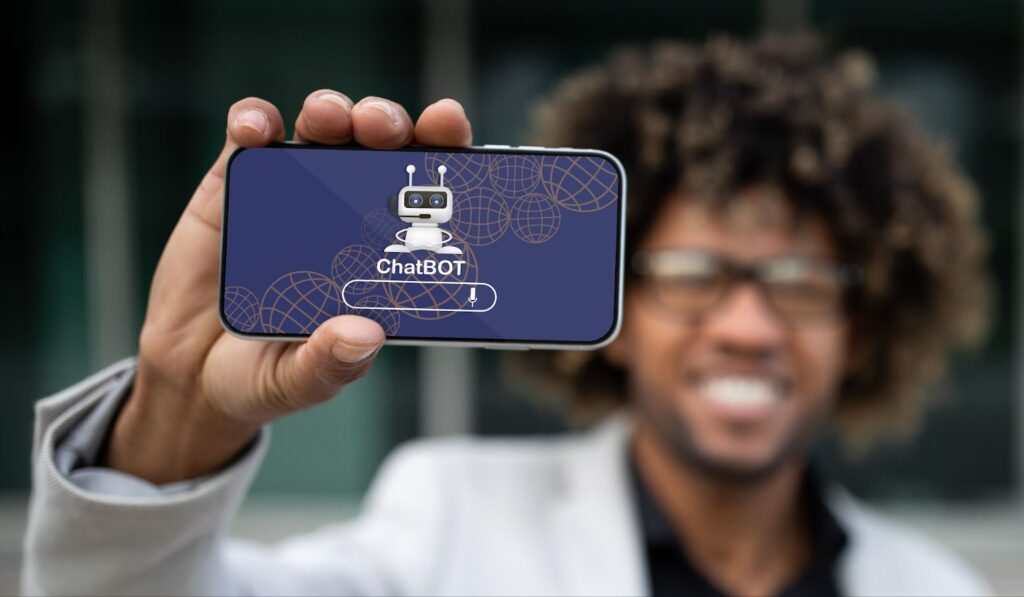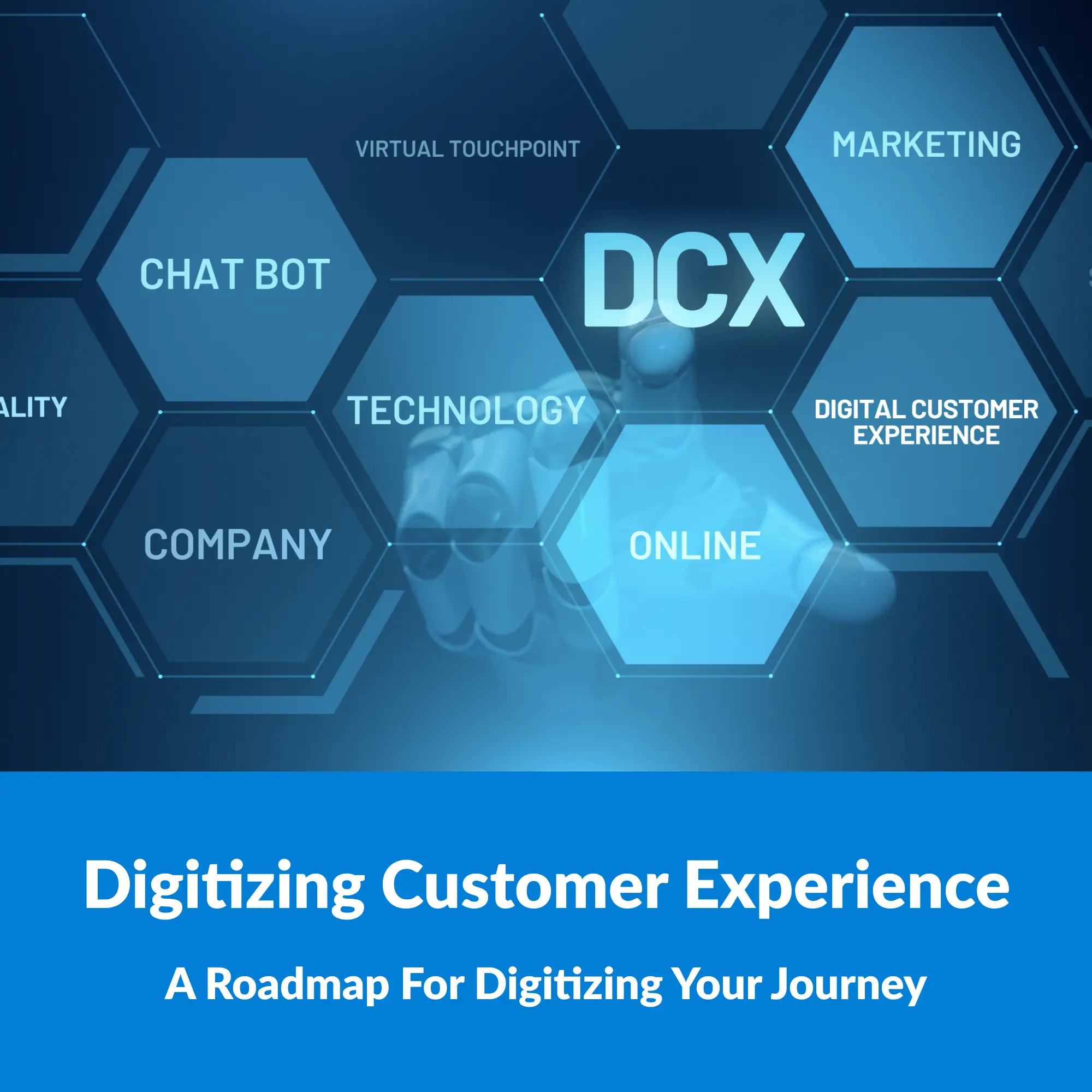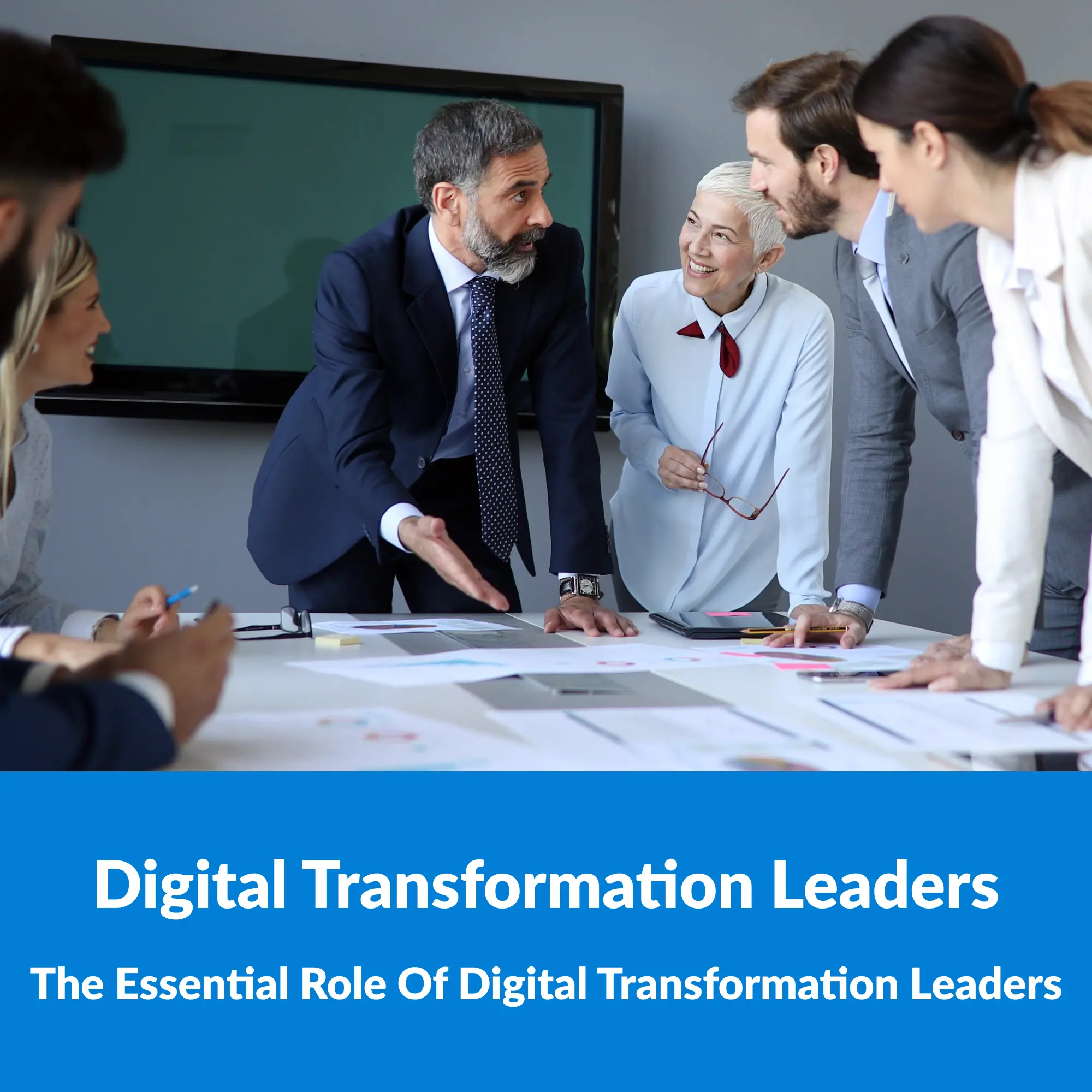Forget the dog-eared map with its wrinkled folds and fading ink. Today’s customer journey unfolds on a digital tapestry, vibrant threads weaving through websites, apps, and social media squares. It’s a labyrinth of possibilities, but navigating it successfully requires a new kind of compass: a digitized customer experience (DCX). Businesses are recognizing the need to digitize customer interactions not just as a trend but as a vital strategy to stay competitive and meet ever-changing consumer demands.
Ready to ditch the dog-eared map and step onto the digital tapestry? Buckle up, because digitizing your CX is an adventure about to begin.
Digitizing Customer Experience (DCX): What is DCX?

Digitizing Customer Experience (DCX) refers to the transformation and enhancement of customer interactions through digital technology. This involves integrating digital tools and platforms into all facets of the customer journey, from discovery and purchase to service and feedback. DCX is about reimagining traditional customer interactions through a digital lens, aiming to streamline processes, improve accessibility, and personalize experiences.
Imagine websites that anticipate your needs, chatbots that read your mind (almost), and loyalty programs that feel like friendships. It’s about harnessing data to weave experiences so seamless, so personalized, that customers don’t just buy, they fall in love with the journey. It’s CX transformed, not just digitized. It’s magic woven into every click and swipe.
Digital Customer Experience vs. Customer Experience


Understanding the distinction between Digital Customer Experience (DCX) and traditional Customer Experience (CX) is crucial in today’s business environment. While both concepts aim to deliver positive experiences, their approaches, platforms, and impacts differ significantly.
- Customer Experience (CX): CX encompasses the broader scope of interactions a customer has with a brand. It includes every touchpoint across all channels, whether it’s a face-to-face meeting, a phone call, an email exchange, or a service encounter. Traditional CX focuses on the direct, often physical interactions between a customer and a business. It is characterized by human elements such as in-person customer service, the physical layout of a store, and the tangible aspects of a product or service. The goal of CX is to build overall customer satisfaction and loyalty through these diverse interaction channels.
- Digital Customer Experience (DCX): DCX, on the other hand, specifically refers to the digital interactions between a customer and a brand. This includes websites, mobile apps, social media, chatbots, and all forms of digital communication. DCX is about harnessing the power of digital technology to create engaging, efficient, and personalized experiences. It’s less about the physical interaction and more about the convenience, speed, and personalization that digital platforms can offer.

The key differences lie in the mediums and the methods of delivery. DCX requires a deep understanding of digital channels and how customers use them. It’s about creating an intuitive online journey, reducing friction in digital transactions, providing quick and relevant digital responses, and personalizing experiences based on customer data gathered through these channels.
- Traditional CX is face-to-face conversation, warm and personal. DCX is instant messaging, fast, efficient, and always available.
- Traditional CX is the handwritten note of thanks. DCX is the curated playlist delivered right to your Spotify based on your recent purchases.
- Traditional CX is the brick-and-mortar store window. DCX is the personalized product recommendations popping up on your favorite apps.
In contrast, traditional CX is more about the human touch – the quality of face-to-face interactions, the tone of voice in a phone call, the ambiance of a physical space. While digital tools can enhance these aspects, the core of CX is rooted in personal, human interactions.
In the modern marketplace, businesses need to excel in both DCX and CX. While DCX offers efficiency, scalability, and data-driven personalization, traditional CX provides the human connection and tangible experiences that are equally important. The most successful businesses are those that integrate DCX seamlessly with their overall CX strategy, ensuring a holistic and satisfying customer journey, both online and offline.
Why Digitize Your Customer Experience? Building Bridges in the Digital Age
The digitization of customer experience (CX) is not just an innovation; it’s a strategic imperative for businesses aiming to thrive and stay relevant. There are several compelling reasons why digitizing CX is critical:
1. Meeting Modern Customer Expectations:
Today’s customers, influenced by the digital revolution, expect quick, seamless, and personalized interactions. Businesses need to keep pace with these expectations by adopting digital solutions. With 35% of business executives acknowledging that digital transformation helps meet customer expectations, it’s evident that digital channels are no longer optional but essential.
2. Enhancing Operational Efficiency:
Digitizing Customer Experience streamlines processes, reduces manual workload, and automates mundane tasks. This leads to increased operational efficiency, allowing businesses to respond to customer inquiries more quickly and accurately. Efficiency isn’t just about speed; it’s also about the quality of the interactions and ensuring that customer needs are met with precision.
3. Data-Driven Insights and Personalization:
Digital platforms enable the collection and analysis of vast amounts of customer data. This data can be used to gain insights into customer behavior and preferences, allowing businesses to tailor their services and communications. Personalization, as a result, becomes not just a possibility but a practical reality, enhancing the customer’s experience and increasing engagement and loyalty.
4. Competitive Advantage:
In a crowded market, offering a superior Digitizing Customer Experience can be a significant differentiator. Companies that excel in their digital offerings can stand out, attract more customers, and retain them longer. In fact, 9 out of 10 customers agree that the experience offered by a company is as important as its products and services, underscoring the value of a well-crafted Digitizing Customer Experience in gaining a competitive edge.
5. Scalability and Global Reach:
Digital CX allows businesses to scale their operations and reach a wider audience without the constraints of physical location. With digital channels, companies can extend their reach globally, offering their services and products to a broader customer base. This scalability is crucial for growth and expansion in the global marketplace.
6. Building Stronger Customer Relationships:
Digitizing Customer Experience enables more frequent and consistent interactions with customers, leading to stronger relationships. Digital channels offer various touchpoints for engagement, allowing businesses to connect with customers in real-time, addressing their needs promptly and building a rapport that extends beyond transactional interactions.
7. Preparing for the Future:
As technology continues to advance, Digitizing Customer Experience is also about future-proofing a business. Embracing digital transformation now prepares companies for emerging technologies and trends, ensuring they remain agile and adaptable in an ever-changing digital environment.
An Example of Digitizing Customer Experience Success Stories: Starbucks’ Digital Transformation
A prominent example of successful digitization of customer experience can be seen in Starbucks, the renowned global coffeehouse chain. Starbucks’ digital transformation journey exemplifies how integrating digital technologies into CX can yield remarkable results.
- Mobile Ordering and Payment System: Starbucks revolutionized its customer experience with the introduction of its mobile order and pay system. This innovation allows customers to order and pay for their beverages and food items via the Starbucks mobile app. By doing so, they can avoid waiting in lines – a significant pain point in the traditional customer experience. This system not only streamlined the buying process but also personalized the experience, as customers can customize their orders with ease.
- Loyalty Program Digitization: Starbucks enhanced its popular loyalty program-Starbucks Rewards by integrating it into its mobile app. Customers earn rewards and special offers through their purchases, which are tracked digitally. The app provides users with personalized recommendations based on their purchase history, increasing engagement and customer satisfaction. This digital approach to a loyalty program has significantly increased repeat business and customer loyalty.
- Data-Driven Personalization: Utilizing data analytics, Starbucks analyzes customer data gathered through its digital platforms to offer personalized experiences. This includes customizing menu recommendations and tailoring marketing communications to individual preferences. This level of personalization has deepened customer relationships and improved the overall experience.
- Enhanced In-Store Experience: Even the in-store experience at Starbucks has been digitized. For example, some locations use digital screens to display menus that change throughout the day, reflecting customer preferences at different times. Additionally, Starbucks has experimented with AI in drive-thrus to streamline ordering processes, further enhancing efficiency and customer satisfaction.
- Impact of Digital Transformation: Starbucks’ digital initiatives have had a profound impact. The mobile order and pay system accounted for a significant percentage of all US transactions shortly after its launch. The company has seen increased customer engagement, higher sales, and improved operational efficiency. Their digital transformation has not only elevated the customer experience but also provided valuable insights into customer behavior, aiding in strategic decision-making.
Stepping Stones to CX Transformation: A Roadmap for Digitizing Your Journey
So you’ve tasted the sweet pudding of success stories and are ready to bake your own Digitizing Customer Experience masterpiece. But where do you start? Worry not, fellow baker! Here’s a recipe with clear steps to get you kneading and shaping your customer experience into a golden delight:
1. Evaluate Current Customer Experience:
The first step is to assess the existing customer experience comprehensively. This involves understanding all customer touchpoints and identifying areas where digital enhancement can make a significant impact. Businesses should gather feedback from customers and employees, analyze customer service interactions, and review the current customer journey to pinpoint inefficiencies or gaps in the experience.
2. Set Clear Objectives for Digital Transformation:
Define specific goals for Digitizing Customer Experience. These objectives might include improving customer satisfaction scores, increasing digital engagement, reducing service times, or enhancing personalization. Having clear, measurable goals helps to focus efforts and assess the success of digital initiatives.
3. Develop a Customer-Centric Digital Strategy:
Create a strategy that puts customers at the center of digital initiatives. This strategy should consider the needs, preferences, and behaviors of the target audience. It should outline how various digital tools and technologies will be used to enhance the customer journey at each stage, from awareness and consideration to purchase and loyalty.
4. Select the Right Digital Tools and Technologies:
Choose digital solutions that align with your CX objectives. This could include CRM systems for better customer data management, AI-powered chatbots for efficient customer service, mobile apps for enhanced user experience, or analytics tools for insightful data analysis. The technology should integrate seamlessly with existing systems and scale as the business grows.
5. Implement and Integrate Digital Solutions:
Once the appropriate digital tools are selected, implement them in phases to manage the transition effectively. Ensure these tools are integrated into existing workflows and systems. Employee training is crucial at this stage to ensure the team is equipped to utilize these new tools effectively.
6. Continuously Gather and Act on Customer Feedback:
Digital transformation is an ongoing process. Regularly collect and analyze customer feedback to understand how well the digital initiatives are meeting their needs. Use this feedback to make iterative improvements, ensuring that the Digitizing Customer Experience remains customer-focused and relevant.
7. Foster a Culture of Digital Innovation:
Encourage a mindset of continuous improvement and innovation within the organization. Stay abreast of emerging digital trends and technologies that could further enhance CX. Cultivating a culture that embraces change and innovation is key to sustaining digital transformation efforts.
8. Monitor and Measure Success:
Regularly track and measure the outcomes of digital initiatives against the set objectives. Use KPIs (Key Performance Indicators) like customer satisfaction scores, digital engagement metrics, and conversion rates to evaluate success and identify areas for improvement.
Conclusion
The digitization of customer experience is not just a fleeting trend but a fundamental shift in how businesses interact with their customers. By embracing this change, companies can enhance operational efficiency, meet and exceed customer expectations, and stay ahead in a rapidly evolving digital world. The journey to Digitizing Customer Experience is ongoing, requiring constant innovation and adaptation, but the rewards in customer loyalty and business growth are invaluable.





